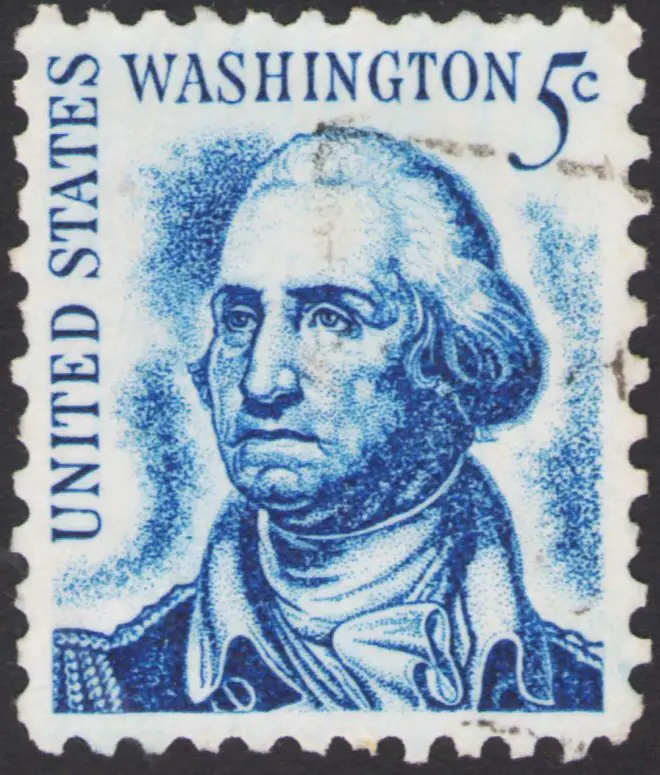
Stamp perforations are the tiny holes punched between rows and columns of stamps. They make separation much more manageable. Before we had perforations, postal workers would have to cut stamps out by hand, often leading to mistakes. Depending on the severity of the mistake (for example, cutting through the design), some stamps wouldn’t even be able to be sold or used. Perforations (or the lack thereof) can also help collectors determine a stamp’s value. Short, creased, bent, or cut off perforations can even cause the stamp to lose value.
Perforation is the most widely used and accepted stamp separation method, and stamps from all over the world can be found that have them. As mentioned above, not all stamps (from the time prepaid postal tax was invented) had perforations. The Penny Black, the world’s first postage stamp, had straight lines on all four sides. This is called a nonperforated stamp, and any authentic stamp made this way is sure to be worth a pretty penny due to the age/rarity.
Contents
Stamp Perforation History
It didn’t take long for people to recognize that cutting and tearing stamps was not only time-consuming but monotonous. The process of manual cutting only lasted for a decade between 1840 and 1850. Eventually, one man decided he would work towards a solution.
Henry Archer produced the “Archer Roulette” in 1847. This machine would make a series of cuts around the postage stamp. Archer created two machines, but neither were quite able to deliver the results he wanted. While rouletting turned out to be a short-lived method of stamp separation, Archer’s ideas led to a new style of cutting altogether. In 1849, he patented a machine that incorporated the “Comb” perforation. The comb technique was eventually sold in 1853.
In 1854, David Napier and Son Ltd constructed new machines based on Archer’s ideas. The first issue of perf stamps was the Penny Red in Britain on January 28, 1854. In the same year, William and Henry Bemrose designed their version of a rouletting machine, which was later converted into a perforating one by George Howard. Bemrose & Co sold the rotary perforating machine to Toppan & Carpenter in 1855. T&C printed all the stamps for the U.S. Post Office, and within two years, the first perforated stamps in America (three-cent stamps) were released!
By 1857 almost all stamps around the world were being created using the perforation method of separation.
What is “Private Perforation?”
Between 1902 and 1927, private manufacturers were perforating stamps sold to them by the Bureau of Engraving and Printing. The Bureau made imperforated sheets that were sent off for perfs, creating a large and unique assortment of, “Private Perforations.”
Can I measure the number of perfs on the side of my stamp?
Yes! With a perforation gauge, you can get the exact number of holes on any side of your stamp. The gauge measures how many holes are within two centimeters. Start by lining up the holes with the pins on the gauge. Do horizontal sides first, then the vertical one. If there are 10, you would describe the stamp as “Perf 10.”
If you don’t have a gauge, you can try using programs like Perfor-Master, ePerforation, or ezPerf. Usually, the horizontal measurement is listed first, then the vertical.
Are all perforated stamps alike?
In a perfect world, all machines making sheets to be stamped and perforated would produce perfect stamps (that matched in every facet and provided uniformity). But realistically, nothing in life is perfect. You are bound to have some errors here and there.
Sheets are perforated after they are printed. If there are any errors during this process, the inspectors are supposed to pull those sheets out and discard them. They are not supposed to be made available to the public, but every so often, one slips by without notice and ends up in the hands of a collector. Due to the element of human error, every stamp in existence is unique (even if you compare two from the same batch side by side). There are many different types of perforated stamps:
- A fine perforation has tiny holes and teeth that are close together.
- A coarse perforation has larger holes and teeth that are further apart.
- Compound perforation means the perfs differ when comparing all sides.
- When a hole is not completely punched out, it is called, “A blind perf.”
- A perforation error is the absence of perforation on one or more of the sides, or it may be in the wrong spot.
- If the stamp design is cut into, it is an off-center perforation.
- If stamps are perforated in the design area with letters or patterns, it is called “A perfin.”
Why would holes need to be punched in the design area of the stamp?
The process of punching holes within the design area of a stamp was first used as a counterfeit measure. In 1868, stamps from Britain were reusable, and security measures were taken by putting the owner’s initials in the stamp. Perfins were authorized for use in America on May 8, 1908.
Postage meter machines later replaced perfins. Stamp meters allow businesses to mail letters without using stamps. This is especially important for those wishing to send out bulk mailings. Today these meters stamp 50% of the mail.
How did people know how many holes per side to use in perforation?
Through trial and error, people discovered that spacing between holes was paramount. If they were too far apart, the separation process was too difficult. But if they were too close together, they would fall apart during handling and would never make it to the customer.
Sources:
Sharpe, W. F. (2016, March 16). Two computer programs that can measure stamp perforations. Retrieved March 13, 2020, from https://www.linns.com/news/us-stamps-postal-history/2016/march/computer-programs-measure-stamp-perforation-gauge.html
Barinoff, A. (n.d.). Perforation. Retrieved March 13, 2020, from https://findyourstampsvalue.com/helpful-terms/perforation
All About Stamp Perforations. (n.d.). Retrieved March 13, 2020, from http://www.hobbizine.com/page0048.html






